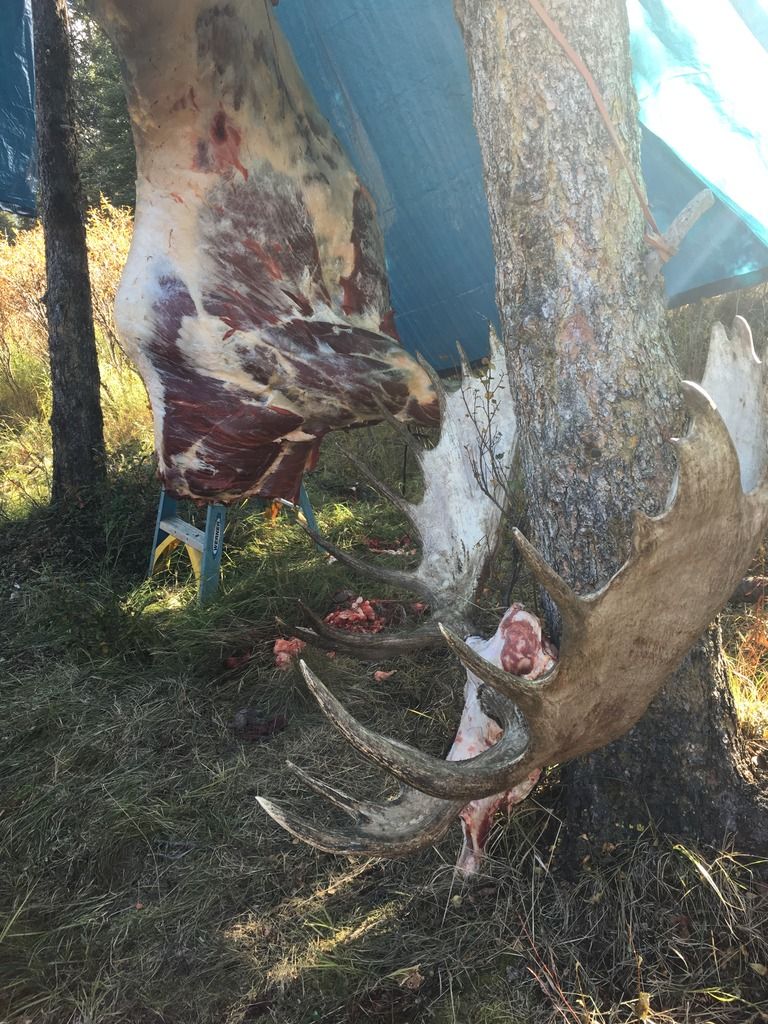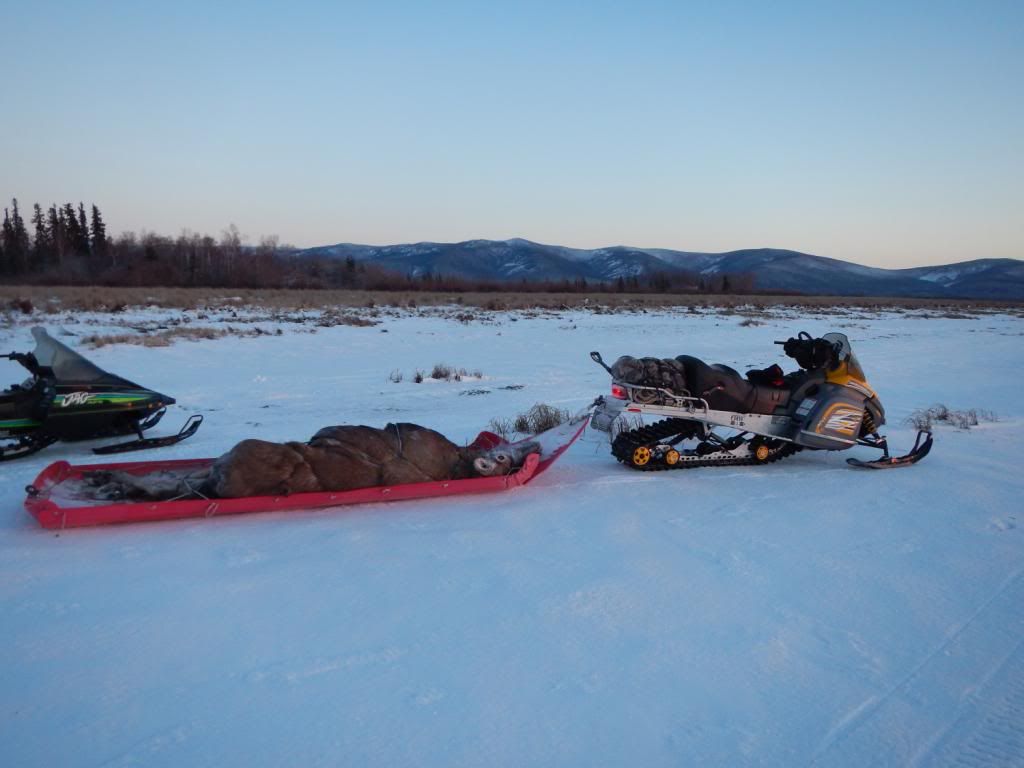dallen
Lil-Rokslider
That utility knife in Stid's reply is golden.


Latex-dipped Kevlar gloves are essential. Citric acid. Meat bags. A good pulley/rope system goes with me. That's all I need.
Would you be so kind as to enlighten me as to what you use the citric acid for, Sir?
SFH
Havalon and one fixed blade for the hide cuts is nice. The ribs don't need to be sawed off. They have joints on both ends. Once you find them you can remove them pretty quick and don't have sharp edges.
Don't gut a moose. Filet it. You won't need the come along then. And you'll never have to dumpster dive into those guts. When filet right you can have a moose ready to pack in about a hour and a half on the high side. My first moose took six hours and I said there's gotta be a better way. Next moose took one hour and ten minutes. Someone called me a Liar so I timed the next several. One hour and 15 min was the longest.
Dude - I would love to watch you do that....I am obviously doing something wrong.


Best reason to gut is when you can recover the moose whole and then skin and quarter hanging. Sawing down the spine exposes the least amount of meat to dirt and air and results in the highest yield if have the gear to pull it off.
I have done a variation of this, but I think for me a lot has to do with where it drops, available help, etc. The majority of my moose hunts have been in areas where it is required to leave the meat on the bone, including the ribs, so I've never boned out a moose. Personally I'm not a big fan of boning anything out, I'd rather deal with the extra wt. For me, it's just easier to keep things clean and easier to move around when it's on the bone. Also, as far as moose go, I've never had to deal with a long pack, all of my moose hunts have been either float hunts or hunts that I've accessed via jet boat. I've never killed one that was very far off the river (with most being right on the river).My moose I leave lay on their side.
Cut from Between the ears to base of the tail.
From the knee to the spine (meet the original cut) on the outside of the shoulder.
Hind leg repeat that cut.
Peel the moose hide from the spine down. Front/hind,rib, neck will all be exposed without having to roll or move the moose.
Push guts down, reach inside and cut tenderloin out.
Grab downside hoof and roll. .
Rinse repeat.
You can take front and hind shoulder off by yourself by placing the leg on your shoulder. Slowly stand as you cut. Leg will flop right over once it's cut free. Then remove the lower section of leg. Knee to hoof.
Guts are extra work. Rope, pullies, saws. All extra work. Save the extra energy for the pack out! Be efficient with your knife cuts and the less wasted movement translates into more energy saved.